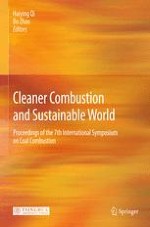2013 | OriginalPaper | Chapter
Numerical Study of Furnace Process of a 600 MW Pulverized Coal Boiler Under Low Load with SNCR Application
Authors : Q. X. Cao, Y. Shi, H. Liu, C. H. Yang, S. H. Wu
Published in: Cleaner Combustion and Sustainable World
Publisher: Springer Berlin Heidelberg
Activate our intelligent search to find suitable subject content or patents.
Select sections of text to find matching patents with Artificial Intelligence. powered by
Select sections of text to find additional relevant content using AI-assisted search. powered by
